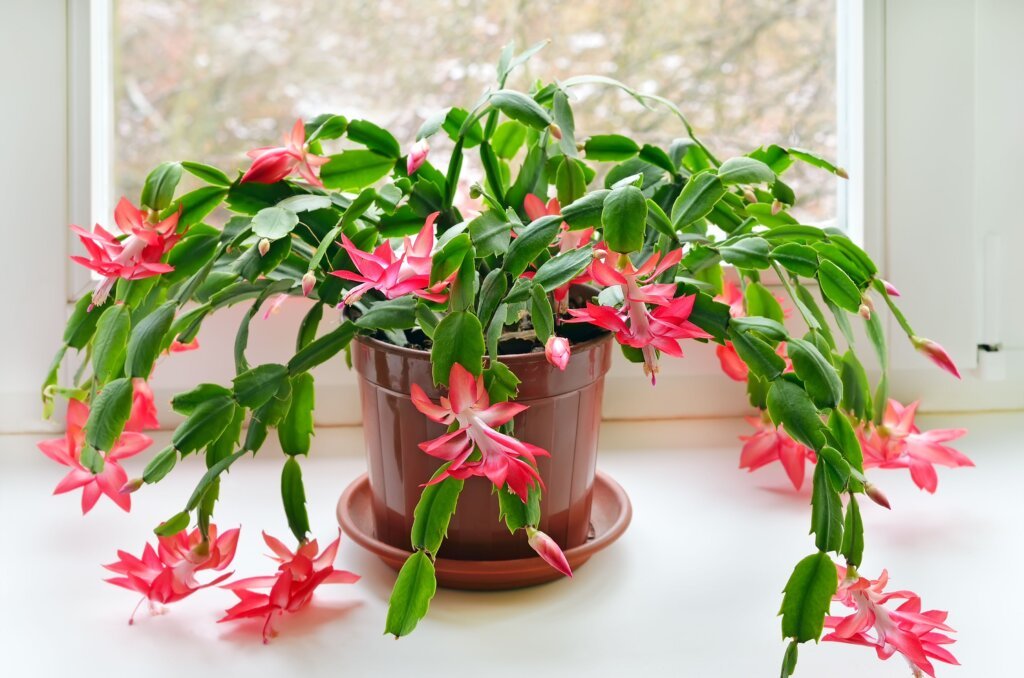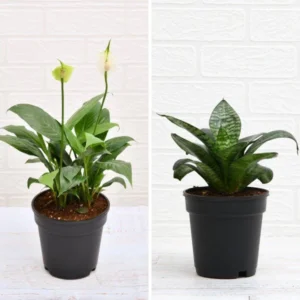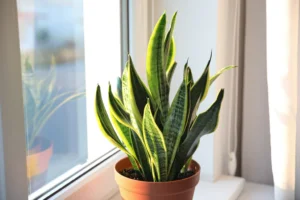The Christmas cactus (Schlumbergera) is one of the most beloved houseplants, known for its vibrant flowers that brighten the holiday season. Unlike desert cacti, it originates from the Brazilian rainforests, which means it enjoys humidity, indirect light, and moderate watering.
If you’ve ever wondered how to propagate Christmas cactus to expand your collection or share with friends, this guide will take you through step-by-step propagation methods, Christmas cactus care, blooming tricks, and an introduction to its many varieties and colors.
Understanding the Christmas Cactus
A Christmas cactus isn’t just a pretty holiday decoration — it’s a long-living plant that can thrive for decades if properly cared for. It blooms during winter, bringing life to the dullest months, and can produce flowers in pink, red, white, yellow, and more.
Unlike typical cacti, it has flat, segmented stems instead of spines. These stems store water, helping the plant survive short dry periods.
How to Propagate Christmas Cactus (Step-by-Step)
Propagation means growing a new plant from a part of an existing one. The easiest and most common way to propagate Christmas cactus is through stem cuttings.
Step 1: Choose a Healthy Stem
Select a healthy segment with at least 3–4 connected joints. Avoid stems that look shriveled, damaged, or diseased. Healthy stems are firm, green, and plump.
Step 2: Make a Clean Cut
Using sterilized scissors or pruning shears, cut just above a stem joint. This prevents damage and reduces the risk of bacterial infection.
Step 3: Let the Cutting Callus
Place the cutting in a dry, shaded area for 24–48 hours so the wound can heal. This step reduces the risk of rot when planted.
Step 4: Plant in a Pot
Choose a Christmas cactus pot with drainage holes and fill it with a cactus/succulent mix or equal parts potting soil, sand, and perlite. Insert the cutting about 1 inch deep.
Step 5: Water Lightly
Lightly moisten the soil — not too wet. Overwatering at this stage can cause root rot.
Step 6: Provide Bright, Indirect Light
Place the pot in a bright spot but away from direct sunlight. Too much sun can scorch the leaves.
Step 7: Wait for Roots to Form
Roots typically appear in 2–4 weeks. You’ll know rooting is successful when you see new growth at the tips.
Bonus Tip: You can also try water propagation by placing the stem segment in a small glass of water until roots appear, then transferring it to soil.
Christmas Cactus Care After Propagation
Once your cutting becomes a young plant, follow these Christmas cactus care guidelines:
- Light – Place in a bright location with filtered sunlight. Direct sun can cause leaf burn.
- Watering – Water when the top 1–2 inches of soil feel dry. In winter, reduce watering slightly.
- Humidity – Maintain moderate humidity (50–60%). Use a humidity tray or mist occasionally.
- Fertilizing – Feed with a balanced Christmas cactus fertilizer (10-10-10 or 20-20-20) every 2–4 weeks during spring and summer.
- Pruning – Trim leggy stems after flowering to encourage branching and fuller growth.
Proper care after propagation ensures your plant grows strong and produces more blooms in the following seasons.
Encouraging a Christmas Cactus Bloom
The Christmas cactus bloom is its most spectacular feature, but it requires a bit of preparation:
- Cool Temperatures – Keep it in a cool room (60–65°F) during the pre-bloom period.
- Dark Periods – Give the plant 12–14 hours of complete darkness daily for about 6 weeks before the holiday season.
- Water Reduction – Water less often during this period to encourage bud formation.
With the right conditions, your Christmas cactus can bloom for 4–6 weeks, sometimes even producing multiple flushes of flowers.
Different Christmas Cactus Colors & Varieties
The Christmas cactus is available in multiple colors and forms, each with its own charm. Below is a table of some stunning Christmas cactus varieties and their features:
| Variety Name | Flower Color | Special Features |
|---|---|---|
| Schlumbergera truncata | Pink, red, white | Most common and easiest to grow |
| White Christmas Cactus | Pure white | Elegant and rare, great gift plant |
| Yellow Christmas Cactus | Golden yellow | Unique, less common in stores |
| Salmon Dancer | Peach-salmon | Soft pastel blooms |
| Lavender Doll | Lavender-purple | Compact growth, perfect for small pots |
Fun Fact: The yellow Christmas cactus is considered one of the rarest colors in home cultivation.
Repotting Christmas Cactus
Repotting Christmas cactus every 2–3 years keeps the plant healthy and prevents root-bound conditions. Always choose a Christmas cactus pot just slightly larger than the current one, as too much soil can lead to waterlogging. Repot in spring after the blooming season ends, using fresh well-draining soil.
Are Christmas Cactus Poisonous to Cats
If you’re a pet owner, you’ll be happy to know that the Christmas cactus is non-toxic to cats and dogs. However, nibbling on the plant might still cause mild stomach upset, so it’s best to keep it out of reach.
Christmas Cactus Fertilizer Guide
A well-fed Christmas cactus produces more vibrant flowers. Use a water-soluble Christmas cactus fertilizer with equal nitrogen, phosphorus, and potassium. Apply every 2–4 weeks during active growth but stop fertilizing in late autumn to help trigger flowering.
Troubleshooting Common Christmas Cactus Problems
Even healthy plants can face issues. Here’s how to handle them:
- Yellowing Leaves – Usually caused by overwatering or poor drainage.
- No Blooms – Check if it’s getting enough darkness and cool nights before blooming season.
- Shriveled Segments – Often due to underwatering or too much direct sun.
- Root Rot – Caused by soggy soil; repot in fresh, dry mix immediately.
FAQs About Christmas Cactus
Q1: Can I propagate a Christmas cactus from a single segment?
Yes, but segments with at least 3–4 joints have a better success rate.
Q2: How long does it take for a propagated Christmas cactus to bloom?
Usually 1–2 years after propagation, depending on care and conditions.
Q3: What’s the difference between a Christmas cactus and a Thanksgiving cactus?
Thanksgiving cactus has pointed edges on its segments, while Christmas cactus segments are more rounded.
Q4: Can a Christmas cactus live for decades?
Yes! With proper care, they can live for 30–40 years or more.
Conclusion
Propagating a Christmas cactus is simple and rewarding. With the right care, proper watering, timely repotting, and balanced fertilizing, your plant will thrive and bloom beautifully. Explore different varieties and colors to make your collection even more stunning.
Ready to take your plant parenting skills to the next level?
👉 Visit Allsnakeplant.com for expert plant guides, propagation tips, and care secrets.




